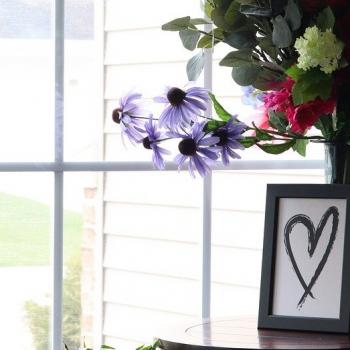 This week we get to discuss a wonderful topic: bringing joy to our meditation and meditation to our joy.
This week we get to discuss a wonderful topic: bringing joy to our meditation and meditation to our joy.
This is great because meditation, and indeed life itself, can be a source of countless joys. Indeed for most of us it is. Life is good.
But it can also be filled with such pain and sorrow. And often-times it is our sorrows and pains that dominate our meditation experiences. I heard one Tibetan Buddhist’s story of an American woman who went to India in search of enlightenment, but after just a few days in isolated retreat near Dharamsala she came out screaming, deeply afflicted by what she saw: her own mind.
We – or most of us at least – spend a huge amount of time and effort pushing away unpleasant experiences in our lives, repressing events and memories that cause us pain. But in meditation we do the opposite, we allow anything that wants to come up to come up. In our metta bhavana we simply practice greeting our memories and thoughts and feelings with an open and loving heart. We don’t run away. We don’t distract ourselves. We don’t lose ourselves in fantasy.
We begin like scientists watching over an experiment: carefully we set the conditions and then we just await the results. And we never reject the results.  What good would that be? A scientist also does not judge the results: good and bad. Our mind is our laboratory. Observe what comes up. And notice that if it is a painful thought, you may want to say it is bad, but just note “pain” and allow it to pass. The same with pleasurable thoughts. Perhaps you react, simply out of habit. You catch yourself indulging in a pleasant fantasy or daydream. Just note that too, “daydream” and move on.
What good would that be? A scientist also does not judge the results: good and bad. Our mind is our laboratory. Observe what comes up. And notice that if it is a painful thought, you may want to say it is bad, but just note “pain” and allow it to pass. The same with pleasurable thoughts. Perhaps you react, simply out of habit. You catch yourself indulging in a pleasant fantasy or daydream. Just note that too, “daydream” and move on.
In this way we loosen the grip that our mind or thoughts or expectations can hold us in. We open to a space of greater freedom, greater flexibility and openness. This openness, when we experience it, should make us smile. Because with the difficult feelings the openness allows us to reach beyond them and to let them pass more easily. And with the pleasurable feelings with openness we can experience them so much more deeply and fully than if we were to cling to them.
This is how we find joy in our meditation. Even when it is hard, when negative thoughts rush up or boredom or lack of energy plague us, we can still have some little moments of openness, when we are just here. And how beautiful that is.
And the second part of our talk tonight is in bringing meditation to our joy, our joyful moments in life. This is a wonderful practice in itself, something that I think was much more common in days gone by. For some it is simply called practicing gratitude (to be discussed more next week). We find gratitude when we ‘step back’ a bit from our experiences and see that they are good. It is a meditation in itself because we are actively breaking the habit of getting lost in good experiences, which so often leads to our clinging to them and then the dull boredom or unhappiness experienced when these experiences have passed.
Bringing a bit of meditation to our joy actually brings us deeper joy, as paradoxical as that sounds… I remember learning and memorizing a tiny bit of a poem from William Blake that states this far more clearly than any words I could have:
He who binds to himself a joy
Does the winged life destroy;
But he who kisses the joy as it flies
Lives in eternity’s sunrise.Eternity.
Next week: 7-22: gratitude, turning the mind to what we are grateful for in this world of flux helps to keep us on track through difficult times in life. Here we will discuss practices of gratitude.











